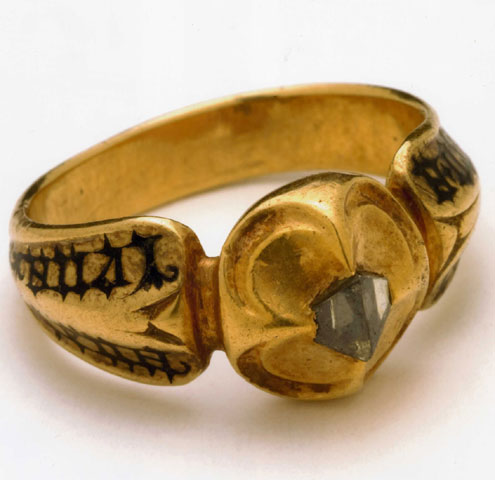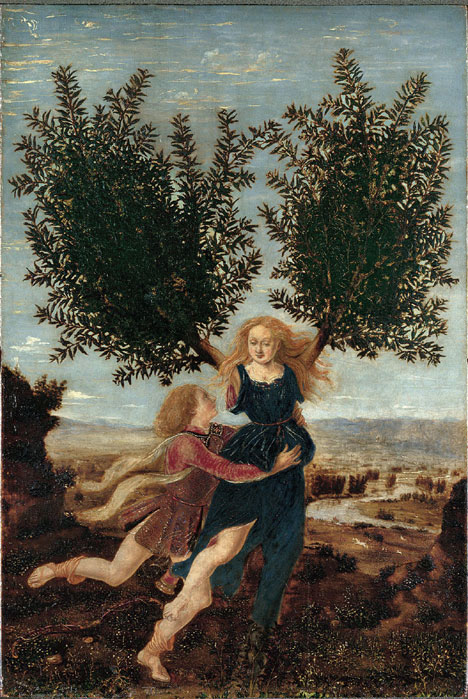FORT WORTH—The Kimbell Art Museum announces Art and Love in Renaissance Italy, a fascinating exploration of art objects made to celebrate milestones in the lives of men and women in Renaissance Italy—betrothal, marriage, and the birth of a child. It will be on view from March 15 to June 14, 2009.
Jointly organized by The Metropolitan Museum of Art, New York, and the Kimbell (its exclusive venues), this exhibition is curated by Andrea Bayer, a curator in the department of European paintings at The Metropolitan Museum of Art, and Nancy E. Edwards, curator of European art and head of academic services at the Kimbell Art Museum.
Art and Love in Renaissance Italy includes approximately 150 paintings dating from 1400 to 1600 that were created to celebrate love and marriage.

Among these works are marriage portraits and paintings that extol sensual love and fertility, exquisite examples of jewelry and maiolica (tin-glazed ceramic) given as gifts to couples, and some of the rarest and most significant pieces of Renaissance glassware, cassone panels, birth trays, and drawings and prints of amorous subjects.
The exhibition will be divided into three thematic sections. The first, Celebrating Betrothal, Marriage, and Childbirth, will feature splendid wedding gifts. For wealthy families in cities such as Florence, Venice, and Milan, the best marriage depended on a sizable dowry provided by the bride’s family—not only money and property, but a variety of goods for the bride’s new home. The lavish wedding celebrations of the period were marked by extravagant gifts, such as maiolica decorated with narratives or portraits; rare Venetian glassware; rings (including one of the earliest known diamond wedding rings) and other jewelry; delicate gilded boxes; and vividly painted cassoni, or bridal chests, which would be filled with costly linens and clothing. Likewise, the safe birth of a child was celebrated and commemorated with the production of finely painted deschi da parto (wooden childbirth trays) and maiolica childbirth bowls known as scodelle da parto. Trays and bowls were often painted with encouraging images of a mother resting in her confinement room, with charming representations of Renaissance interiors. Marked with heraldic devices, these objects were prized possessions handed down from generation to generation.

The section Profane Love will focus on erotic, at times salacious, imagery in drawings, prints, and other objects created by some of the most celebrated artists of the time, including Parmigianino and Giulio Romano. Many of these works exhibit a witty, burlesque sensibility that satirizes more intellectually elevated modes of art and literature. Classical mythology, especially the loves of the gods recounted by Ovid and other ancient poets, provided a convenient pretext for the portrayal of erotic imagery. The world of the courtesan and the luxury items associated with it will also be explored in the exhibition. Famed for their beauty, cultural accomplishments, and wit, courtesans were especially prevalent in Rome and Venice.
From Cassone to Poesia: Paintings of Love and Marriage will shift the focus to nuptial portraits and paintings on themes of love that decorated bedchambers and private quarters. Highly important and intriguing works by such painters as Fra Filippo Lippi, Domenico Ghirlandaio, and Lorenzo Lotto will be on display, including double portraits commemorating marriages, as well as rare portraits of babies, fathers with their children, and widows.
Decorating the camera (bedroom) of a new husband and wife was of enormous importance, and the families would spend huge sums on cassoni and panel paintings called spalliere, which were installed about shoulder height as part of the wainscoting. Virtuous women from ancient history or the Hebrew Bible, whose stories were depicted on cassoni panels, were also the subjects of paintings that decorated the walls of nuptial chambers, serving as models of morality for the newlyweds.
The poetic genius of the Renaissance will be represented by some of the most beguiling and sensual works of Titian, Palma il Vecchio, Tintoretto, and their contemporaries. Portraits of belle donne (beautiful women) reflect poetry that lauded women’s beauty. The symbolism of these ravishing paintings is not straightforward, and the identity of the women portrayed continues to be debated. Are they courtesans, brides, or idealized beauties? The extraordinarily sensuous representations of Venus by Titian and other Venetians launch us into a new era of paintings that treat subjects related to love and marriage. Distant cousins of the reclining nudes found in the inner lids of cassoni in the fifteenth century, they are imbued with far richer poetic sensibilities—visual equivalents of the poems that the ancient Romans recited at weddings. Like contemporary poems and prose by writers beginning with Petrarch, these mythological and allegorical paintings speak the language of love.
The great Renaissance paintings about love and marriage owe their rich complexity, and often ambiguity, to the varied ways people thought about love and marriage at the time. The exhibition offers an illuminating and engaging look at some of the most beautiful works of the period from this historical and social point of view.
Art and Love in Renaissance Italy is organized by The Metropolitan Museum of Art, New York, and the Kimbell Art Museum. It is supported by an indemnity from the Federal Council on the Arts and the Humanities. On view at the Metropolitan Museum through February 16, the exhibition comes to the Kimbell as its only other venue. Promotional support is provided by American Airlines, NBC 5 and the Fort Worth Star-Telegram.
The exhibition is accompanied by a fully illustrated catalogue published by The Metropolitan Museum of Art in association with Yale University Press, New Haven and London, which is available in the Museum Shop. This important volume, by a distinguished group of scholars, is the first to examine the entire range of works to which Renaissance rituals of love and marriage gave rise. It is a major contribution to our understanding of Renaissance art in its broader cultural context.
The authors of the catalogue include Andrea Bayer, curator, Department of European Paintings, The Metropolitan Museum of Art, who is also the editor of the catalogue; Beverly L. Brown, independent scholar, London; Nancy E. Edwards, curator of European art/head of academic services, Kimbell Art Museum; Everett Fahy, John Pope-Hennessy Chairman, Department of European Paintings, The Metropolitan Museum of Art; Deborah L. Krohn, associate professor, Bard Graduate Center, New York City; Jacqueline Marie Musacchio, associate professor, Department of Art, Wellesley College, Massachusetts; Luke Syson, curator, Italian Painting, 1460–1500, The National Gallery, London; Dora Thornton, curator, Renaissance Collections and the Waddesdon Bequest, Department of Prehistory and Europe, The British Museum, London; James Grantham Turner, professor, Department of English, University of California, Berkeley; and Linda Wolk-Simon, curator, Department of Drawings and Prints, The Metropolitan Museum of Art.
Kimbell Art Museum hours: Tuesday–Thursday and Saturdays, 10 a.m.–5 p.m.; Fridays, noon–8 p.m.; Sundays, noon–5 p.m.; closed Mondays. For general information, call 817-332-8451. Web site: http://www.kimbellart.org/. Address: 3333 Camp Bowie Blvd., Fort Worth, TX 76107.